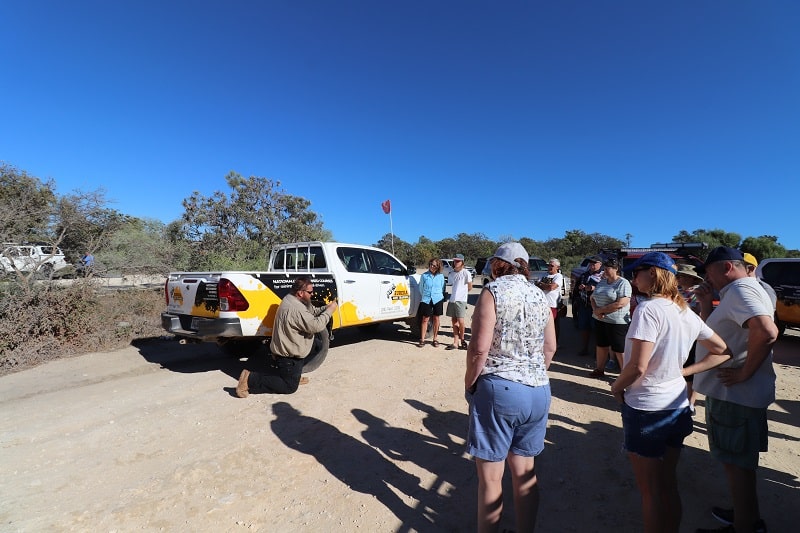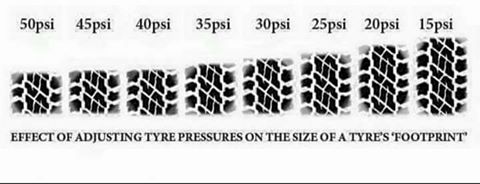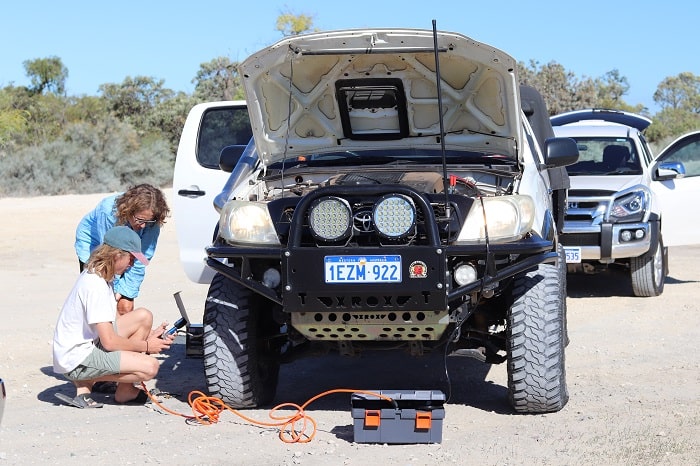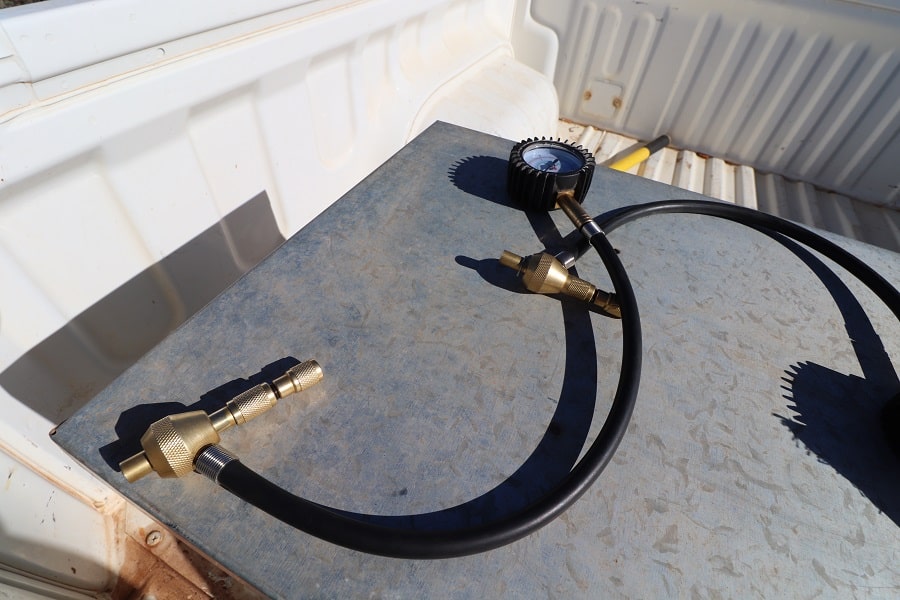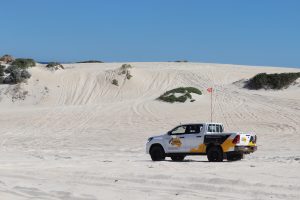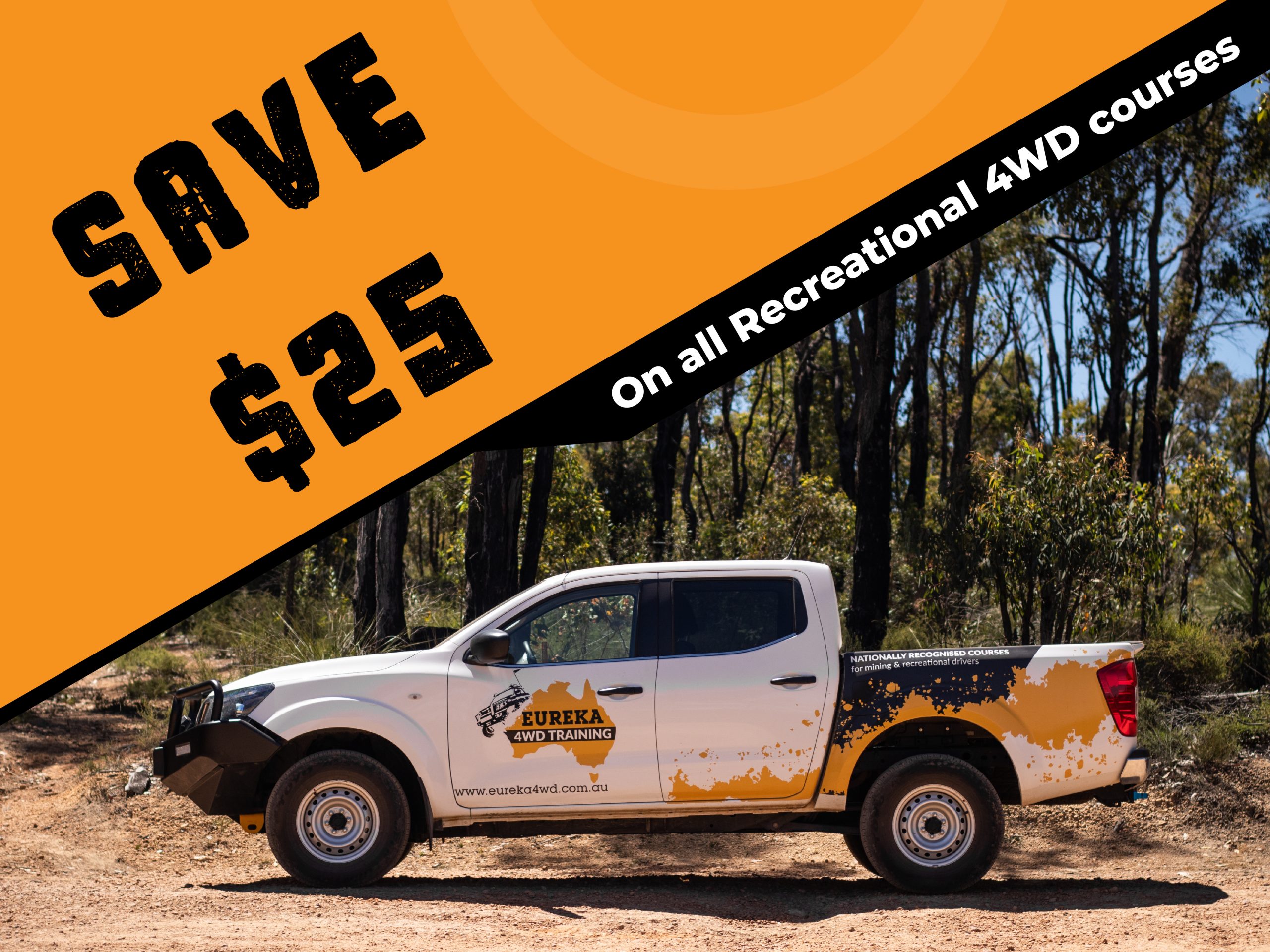A very important aspect of being a competent off-road driver is operating with the right tyre pressures to suit your vehicle and terrain, for many off-roaders even some seasoned tyre pressure reduction only comes into consideration when soft sand is being driven over which is far from the truth.
In any off-road situations, the right tyre pressure can help out immensely for both successfully driving through the terrain, occupant comfort, looking after your vehicle and avoiding track deterioration.
What Pressures Then?
These are the pressures we at Eureka 4WD Training use (They may not be for your vehicle set-up this is a guide from our personal experience over the past 26 years training off-road)
Now there is no set in a stone answer here as there are quite a few factors that have to be considered such as;
Weight of Vehicle and Where That Weight is Situated:
The more your vehicle weighs the more PSI you will have to run and pressures should be adjusted to suit both front and rear tyres depending on where the weight is situated (We operate lower pressures in our utility’s due to carrying no weight in the rear to achieve the same flotation as the front tyres).
Tyre Construction:
Those that use Heavy-duty L/T (Light Truck) tyres in some A/T (All-Terrain) and all M/T (Mud Terrain) patterns will find they have to run lower pressure than a standard road tyre due to the fact that the carcass of the tyre being designed much stronger and the sidewalls being much stiffer. On two of our work Hilux’s we use M/T Tyres and operate 2-4PSI lower than our standard tyres.
Types of Terrain:
The biggest influence on tyre pressures is obviously the terrain you are driving on but we deflate tyres for Sand, Corrugations, Rocks, Mud and Gravel Roads.
Sand
- A starting pressure of 18PSI is in most cases a common theme but one that we don’t use unless the sand is very firm, Instead we recommend for most standard weight 4WD vehicles that 14PSI is a better option with still room for improvement. Our work vehicles operate between 10-14PSI on soft sand and not once in 26 years of training have we lost a tyre off of the rim. Don’t turn like Daniel Ricciardo through the chicanes and neither should you.
Corrugations
- Our work and personal 4WD vehicles operate at 26PSI over corrugations and our reasoning for this is the fifth shock absorber effect this offers to both occupant comfort and avoids overheating of the shock absorbers themselves. We only travel at 80km/h at most on these surfaces and for not extended periods also to prevent overheating of the tyres.
Rocks
- We operate our tyre pressures between 18-22PSI over rocky ground to aid in traction, looking after the terrain and vehicle comfort. We are always mindful of the possibility of rim damage and being lower to the ground actual lack of clearance is something to consider.
Mud
- When we find ourselves dealing with mud our tyre pressures are between 16-20PSI depending on tyre construction/pattern – too low a pressure can see slow leaks arise from mud inside tyre bead and possible sidewall damage from hidden objects.
Gravel Roads
- Similar to corrugations between 26-30PSI depending on the road surface and speed/length of driving time.
Now, this is in no way a definitive pressure scale has to abide by but these pressures have seen us successfully and safely drive through the majority of Australia – these are pressures that work for us.
Always remember everyone that low pressures=lower speeds as driving at speed for long distances with low tyre pressure can easily result in tyre failure and blowouts. Be aware of possible sidewall damage due to the sidewall protruding more (Tread is the strongest part of the tyre) and lower ground clearance issues.
Always carry a working tyre compressor and a couple of tyre gauges (In case one fails)
Regular checks of your tyre pressures are also important due to heat build-up and check them in the morning if you camped overnight with deflated tyres.
As always everyone please keep safe out there 🙂
For more 4WD tips, reviews and articles from Eureka 4WD visit our blog page
Feeling adventurous? Then join us on a Eureka 4WD Training Course – we have courses to suit all levels of 4WD skill and experience.
Looking for Commercial 4WD courses or Certified 4WD courses? Visit our Commercial training page and find the course that will take your career to the next level.
Have you heard? Eureka 4WD has launched a training app design specifically for 4WDing – and the best part is that it is completely free!
Now you can have an expert with you at all times – available for Android and Apple users in the respective app stores.
Need a truck license? Eureka now offers HR, HC and MC truck training through Eureka Truck Training

